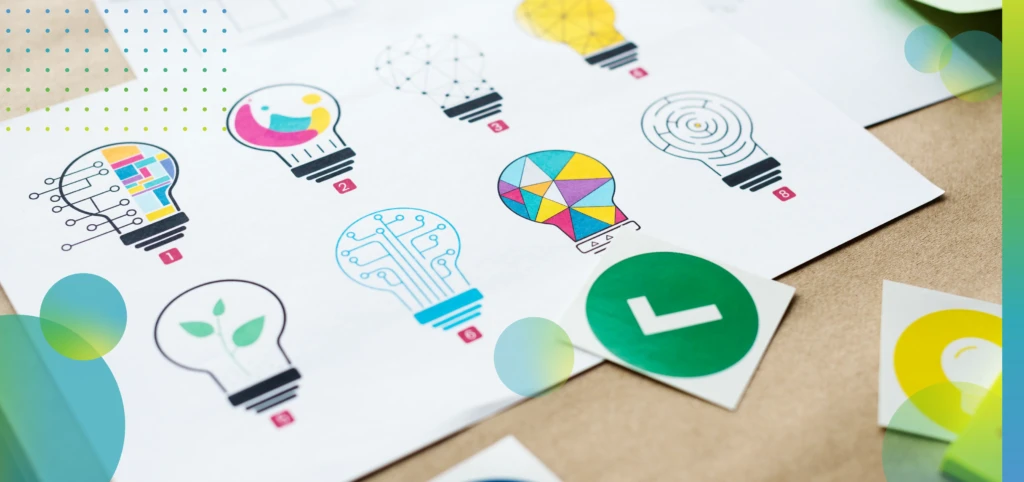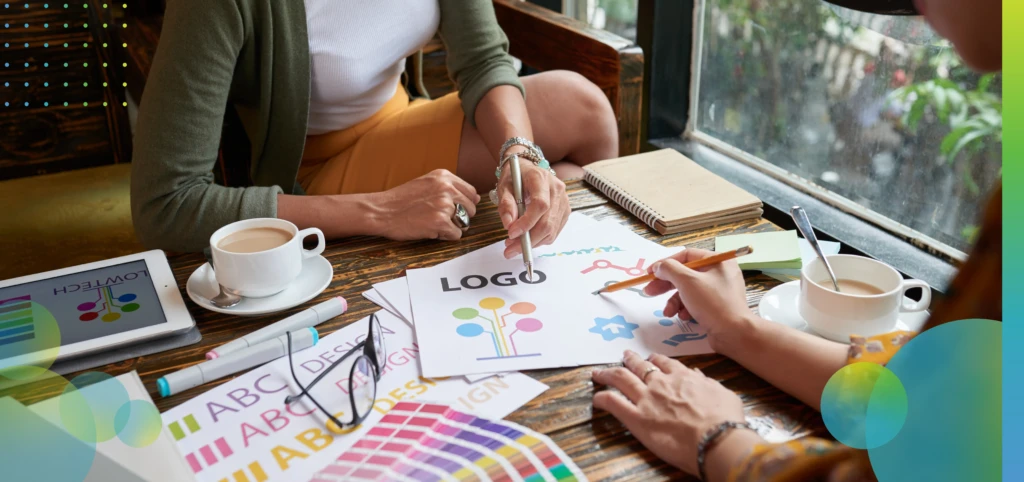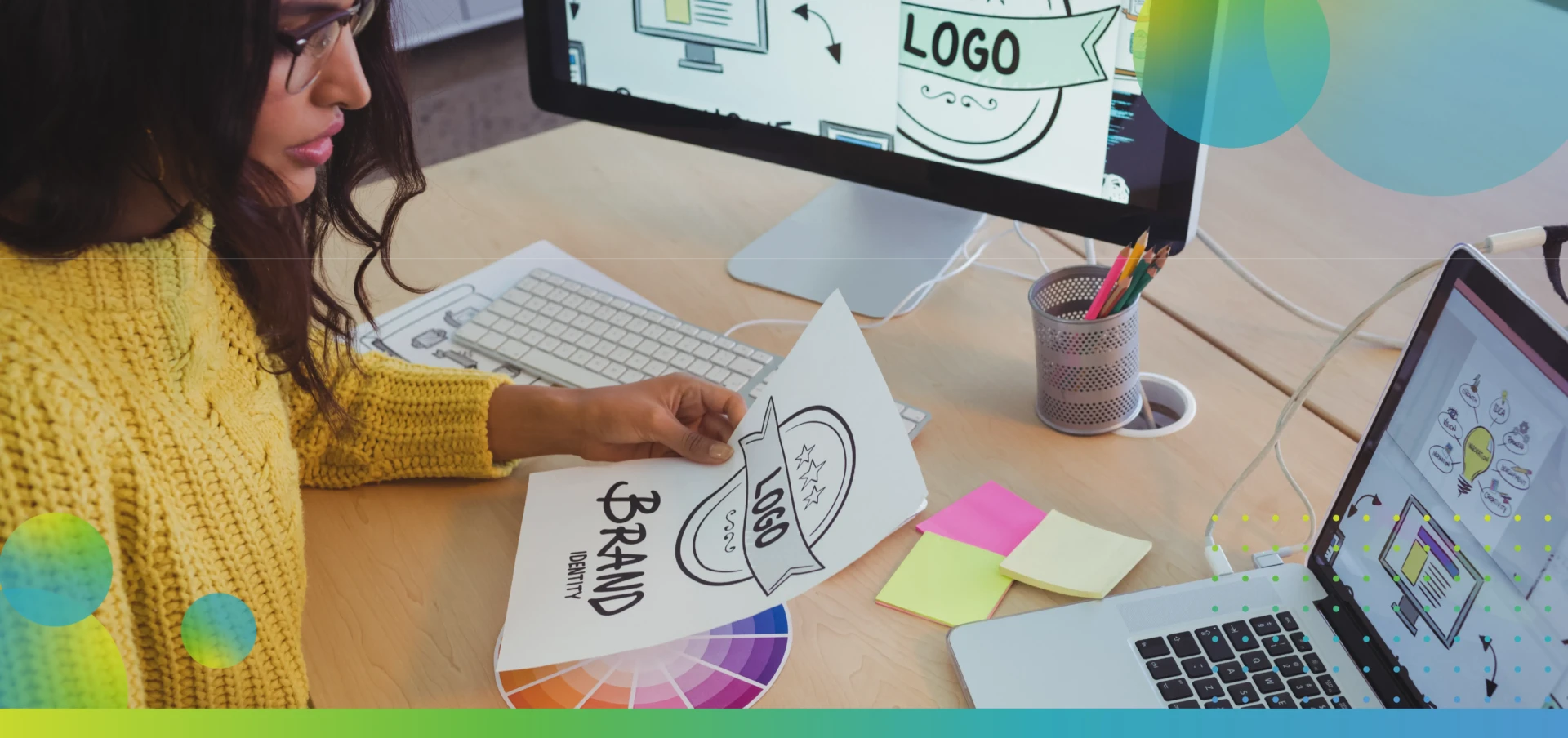One in four adults tends to trust a business more when they recognize its branding or logo, and as we’re aware, consumer trust is a vital element in establishing a successful brand. The same is happening regardless of gender.
When you assist a client in refining their logo, you are directly fostering the essential trust they need. This blog outlines the best practices for logo design that you should master before offering logo design services to your end customers. These golden rules of logo design might prove very useful in the long run and help your clients create some memorable logos.
Let’s dive in!
- Why Logos Still Matter More Than Ever
- The Business Case You Can Present: What a Great Logo Really Does
- Knowing When to Advise an Update
- How Hostopia’s White-Label Logo Design Service Works
- Principles of a Powerful Logo Design

Why Logos Still Matter More Than Ever
A logo starts as a pretty picture, but it’s also one of the strongest marketing materials for your company. It’s also the ambassador of a brand’s personality and values, shaking hands (or winking) before any words are spoken.
When you guide a client through a logo refresh, you help them:
- Grab attention: A modern, compelling logo can stop a user from scrolling past an email or social media post.
- Boost recognition: It allows customers to spot your client’s brand in a split second, creating instant familiarity in a crowded marketplace.
- Reflect evolving goals: It visually communicates their growth, whether they’re launching a new product line, targeting a new demographic, or simply modernizing their approach.
More importantly for you, every conversation about a logo is a chance to elevate your relationship.
The Business Case You Can Present: What a Great Logo Really Does
Help your clients see a logo update for what it is: not a superficial expense, but a direct investment in measurable business growth.
Consistent brand identity can potentially increase revenue by about 23%. Also, color can significantly improve brand recognition, with studies showing it can increase it by up to 80%.
Here is the value proposition you can present to them:
- It builds immediate trust and recall. A sharp, professional logo design makes a lasting impression and signals credibility and stability. Because people process visuals almost instantaneously, a strong logo is the fastest way to build a mental hook.
- It amplifies marketing performance. Consistency converts. When a cohesive logo is used across all marketing materials, from their website and social media to their invoices and email signatures, it creates a seamless and trustworthy brand experience that makes customers more likely to engage and purchase.
- It reinforces credibility in a competitive arena. Whether it’s on a business card, a trade show banner, or a digital ad, a well-crafted logo helps your client stand shoulder-to-shoulder with the biggest players in their field. It’s a visual cue that they are professional, established, and a serious contender.

Knowing When to Advise an Update
Now, how do you initiate this valuable conversation? Start by asking your client one simple, diagnostic question: “When was the last time you critically reviewed your logo’s performance?” Assess whether the current logo still aligns with the brand’s goals and effectively communicates its identity.
This question helps identify clear signs that it’s time for a change. Guide them by exploring further:
- Does their design look dated compared to new competitors?
- Has their business strategy or focus shifted since the logo was created?
- Does the logo scale poorly, looking blurry on large screens or becoming illegible as a tiny social media icon?
- Does the existing logo still represent the brand’s identity, or is a new logo design needed to reflect recent changes?
By highlighting these issues, you can frame the benefits of an update: a refreshed brand perception, a modern appeal that attracts a new generation of customers, and a versatile identity that performs flawlessly across all critical digital channels.
How Hostopia’s White-Label Logo Design Service Works
Offering professional logo design is one of the fastest ways to become indispensable to your clients. But you don’t need to hire an in-house team to deliver a high-end, agency-quality experience. Our white-label service is designed to work seamlessly behind the scenes, making you the hero. Our team of graphic designers work together to create fresh ideas that truly reflect your clients’ brands.
Our Proven, Partner-Focused Design Process
We’ve refined our design process to be simple for your client and hands-off for you, ensuring a professional outcome every time. Here’s how you can present it to your clients:
- The creative brief: It starts with your client filling out a straightforward brief. This step is crucial for gaining a clear understanding of the brand’s personality and target audience. By sharing their vision, values, and business personality, your client provides our creative team with the strategic foundation needed to ensure the logo reflects the unique traits and identity of their brand.
- Concept creation: Our expert graphic designers then get to work, using this clear understanding of the brand personality and target audience to develop up to 10 unique logo design concepts. We explore different styles to give your client a rich variety of options that align with the brand’s personality and resonate with the intended audience, all delivered within five business days.
- Refinement and revisions: Your client provides feedback, and we make revisions. This collaborative step ensures the final design is a perfect fit for their brand.
- Final delivery: The approved logo is delivered in 11 professional file formats. It’s ready for immediate use on everything from websites and social media to print materials and merchandise.

Principles of a Powerful Logo Design
Position yourself as a branding expert by sharing these essential logo design tips. This advice will help your clients think strategically about their brand and see you as a valuable consultant.
Here’s some bite-sized advice you can offer:
- Lead with strategy, not only style: Before thinking about colors or shapes, ask: “Who is our ideal customer?” A good logo for a law firm looks very different from one for a children’s daycare. The audience defines the direction. Make sure your logo aligns with your overall brand strategy, reflects your business’s values, and communicates your brand’s stand.
- Embrace simplicity and scalability: The most iconic logos are simple. A complex design is hard to remember and often looks messy when shrunk down for a social media profile or favicon. Test it: does it work in a one-inch square? Study popular logos and the best logos—like the Nike Swoosh, Apple logo, Coca-Cola logo, Burger King, McDonald’s golden arches, and Twitter logo—to see how their logo designs achieve memorability and versatility.
- Test in black and white: A logo that relies only on color to make an impact is a logo that will fail. A strong design works just as effectively in a single color, ensuring it’s versatile enough for any application, from a newspaper ad to a branded pen. Also, test your logo on a white background to ensure clarity and visibility.
- Check it across platforms (and backgrounds): Before finalizing, visualize the logo on a website header, a mobile app icon, and a printed brochure. The best logo design elements hold their own in any context. Ensure your logo is readable and visually effective across every platform to reach every potential customer.
- Be consistent with all your branding assets: Use your logo consistently across all branding assets, from business cards and digital materials to branded merchandise like a water bottle, to reinforce your brand’s identity and improve recognition among potential customers.
- Create your own logo for a unique identity: Designing your own logo gives you control over your brand’s message and ensures your company logos are tailored to your industry and specific businesses. This helps your brand stand out among other companies.
- Update to stay relevant and reach a new audience: Regularly review your logo to ensure it’s staying relevant and appealing to a new audience as trends and your market evolve.
- Grab the audience’s attention: A good logo should capture the audience’s attention and leave a lasting impression, helping your brand be memorable and easily recognized.
- Maintain consistency in your brand’s identity: Ensure your logo and all branding elements are consistent across every touchpoint to strengthen your brand’s identity and build trust with your audience.

Conclusion: Logos Aren’t Only Art, They’re Strategy
A great logo does more than just look good. It helps a business stand out, connect with customers, and drive growth. For our partners, the logo creation process is a strategic entry point. It’s the gateway to deeper conversations about a client’s entire online presence, cementing your role as their go-to digital expert.
Your move: Look through your client portfolio. Who has a logo that looks tired or no longer represents who they are? Who is just starting out and needs to make a strong first impression?
Use our white-label service to help them build a brand that lasts—and build your own recurring revenue while you do it.
FREQUENTLY ASKED QUESTIONS
Do clients own the rights to their final logo?
Yes, 100%. Once the design is finalized, the client owns full rights to the brand’s logo—no additional licensing or restrictions. That means they’re free to use it however and wherever they want.
Can this logo service be bundled with other products we offer?
Definitely, and you should. Logos pair perfectly with:
- Website design and hosting
- Domain registration
- Business email
- Listings management
- Our Online Presence Builder
This creates a full branding package that improves stickiness and increases revenue per client.
How quickly will the logo concepts be delivered?
Initial concepts are typically delivered within five business days after the client submits their brief. The faster the brief is completed, the faster the design process begins.
What makes a good logo design stand out?
A good logo design combines simplicity, clarity, and meaning. It should use essential elements like a clean font style, a consistent color palette, and a design that works across different platforms. Most importantly, it should effectively communicate the brand’s personality and values at a glance.
What’s the difference between a logo and brand identity design?
A logo is just one part of a brand identity. Full brand identity design includes a logo, color palette, typography, visual style, tone of voice, and even how the logo appears across platforms. It’s the full visual toolkit a brand uses to make a consistent impression.

